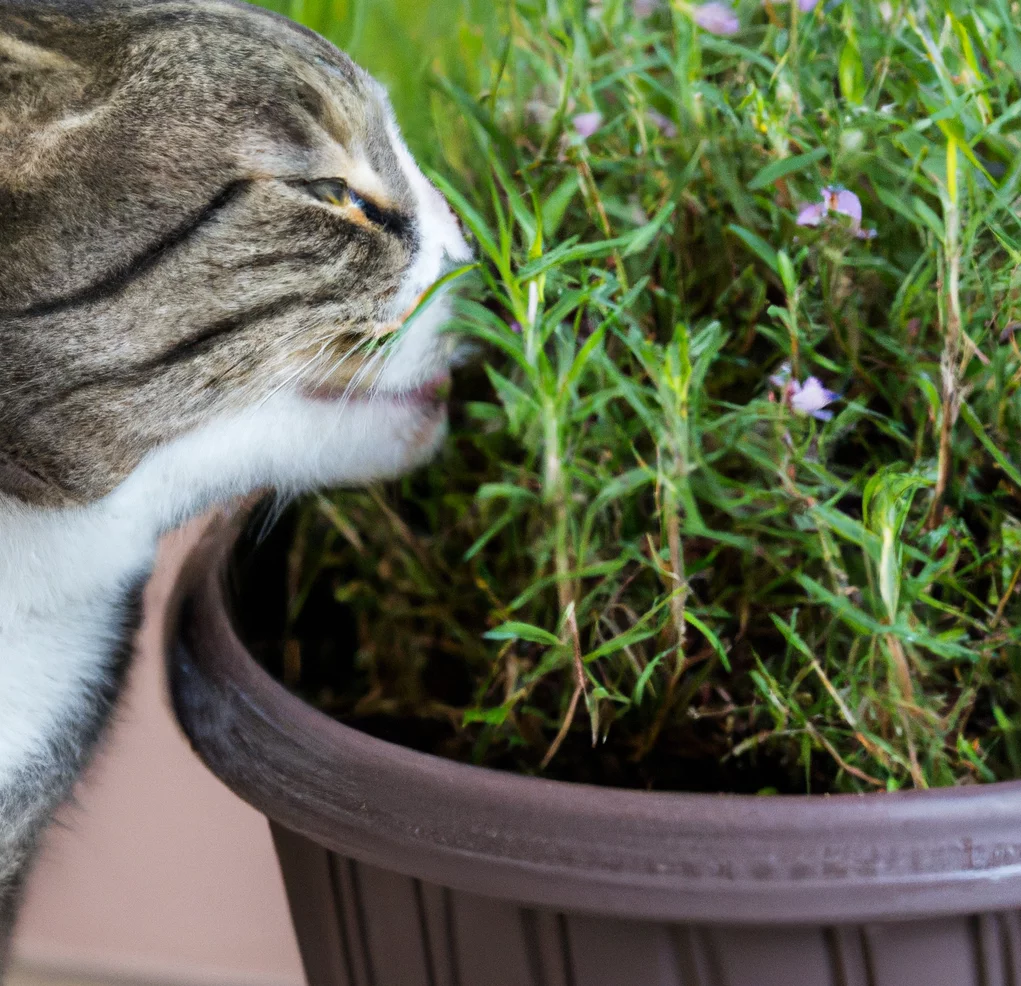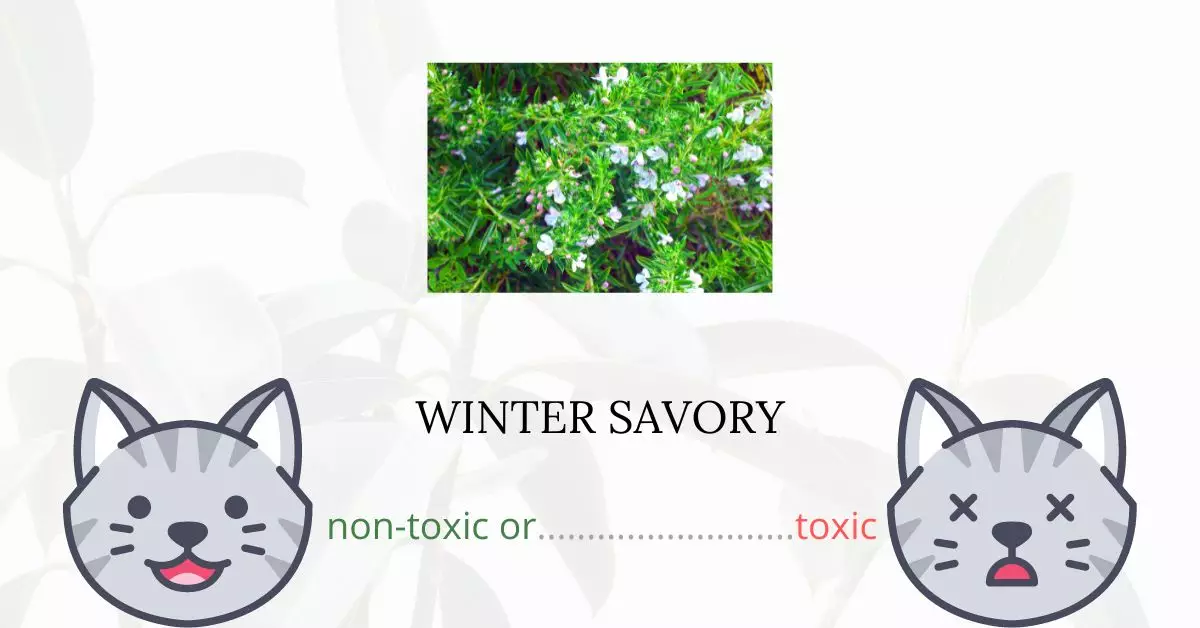Winter savory is considered non-toxic to cats.
In collaboration with a team of experienced DVMs (doctors of veterinary medicine), we’ve determined that winter savory poses no discernible harmful effects to our feline friends. Our dedicated research, which includes references from high-authority websites such as ASPCA and PetMD, further supports the claim that winter savory can be safely grown around cats.
Aside from its safety for pets, winter savory is also an easy-to-grow herb and serves as an attractive border plant for gardens and households.
Can Cats Eat Winter Savory?

Although the winter savory may be thought to be safe for cats, this does not give you a free pass to let them eat the plant whenever they want.
The winter savory contains no toxic substances, however, if a cat eats a lot of this plant, it may have indigestion. Cats are carnivorous animals, thus their bodies can’t fully digest plant matter. They might consequently experience nausea, vomiting, and diarrhea. Once your kitty friend has expelled all the inedible elements from his body, these symptoms will go away.
What is Winter Savory?

In the Lamiaceae family, winter savory is a perennial plant that is semi-evergreen and endemic to mild temperate areas of southern Europe, the Mediterranean, and Africa. It contains blooms that range in color from pastel lavender, pink, and white, as well as dark green leaves.
Scientifically known as Satureja montana, this plant can reach heights of between 4 and 16 inches (10 to 40 cm). The opposing, oval-lanceolate, (or needle-like), 1-2 cm long, and 5 mm broad leaves are leathery and dark green. Compared to summer savory blossoms, the flowers of winter savory are smaller.
Winter savory is dried, powdered, and mixed with grated breadcrumbs to bread meat, or to give it a quick relish. It is used as a seasoning in the same way that summer savory is, but it is not used medicinally.
Keeping Cats Away From Winter Savory

Cats will steer clear of spiky areas and prefer to walk on soft, loose soil. Create a less appealing or litter-like atmosphere in your garden beds.
By laying out onion or potato mesh produce bags in the garden and securing them with twigs or posts, you can recycle them. If required, widen the opening around your developing plants.
Push thorny yard trimmings, such as pine cones or fall leaves, into the soil around your plants. Other choices include recycled plastic carpet runners with the nub side up, stone mulch, eggshells, holly cuttings, and so forth.
Plants to Avoid For Your Cats
If you are a cat owner and unsure if the plants growing in your yard are harmful to your cats, check out this list of toxic plants for cats. You can also check our list of non-toxic plants for cats.





